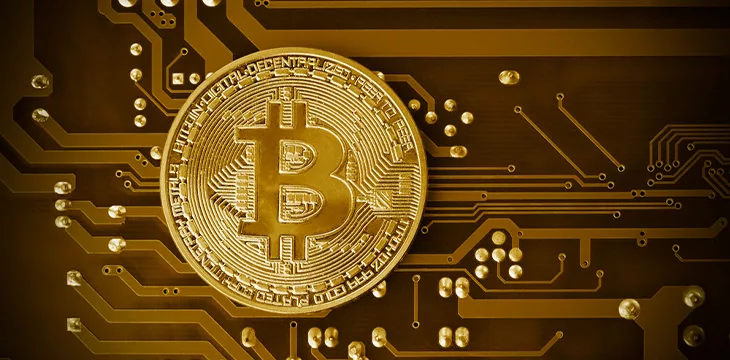|
Getting your Trinity Audio player ready...
|
The BSV Blockchain welcomes new rules that further distinguish it as a legally compliant enterprise blockchain platform and the polar opposite of the anarchic, law-averse BTC protocol currently masquerading as the original Bitcoin.
Last week, the Swiss-based BSV Association (BSVA) announced the implementation of a suite of security enhancements to the BSV blockchain network. These enhancements include new Network Access Rules (NAR) and the reimplementation of the Alert System
originally introduced by Bitcoin Creator Satoshi Nakamoto, all of which will help make the long-awaited promise of Digital Asset Recovery (DAR) a reality.
The NAR stipulates the requirements for BSV blockchain nodes to honor Bitcoin’s
Unilateral Contract by accepting Satoshi’s definition of ‘honest’ activity, as described in section five of the 2008 Bitcoin white paper. This includes promoting and maintaining lawful behavior by rejecting blocks that fail to conform to these standards.
Honesty also requires nodes to comply with existing frameworks that govern legal financial activity. The common framework elucidated in the NAR—the product of not only developers but also legal representatives with extensive experience in traditional finance—is intended to permit legal recourse between nodes when one or more of them breaches the rules.
It cannot be emphasized more strongly how much of a differentiator the NAR is from the policies of other networks, including BTC. The latter’s endemic hostility toward regulators and law enforcement agencies has convinced authorities around the globe that these networks are the antithesis of progress, with predictably negative impacts on wider adoption.
Arrested development
Real growth requires real change. Only through the standards and practices detailed in the NAR can the BSV blockchain continue to grow in a steady, stable, and transparent fashion, an absolute imperative to ensure wider adoption of blockchain technology by enterprises and governments.
BTC has no such goals, which is why its gatekeepers actively prevent their network from scaling. This is intended to satisfy the early adopters who prefer inert ‘digital gold’ to peer-to-peer electronic cash and immutable data storage.
In stark contrast, BSV has demonstrated both the willingness and the capacity to scale to meet whatever needs are thrown at it. This imposes significantly greater requirements on those looking to serve as network nodes.
It’s been 15 years since the creation of Bitcoin’s Genesis Block. Over that span, the practicality of individuals running so-called ‘hobby’ nodes has run its course. As Satoshi himself observed in November 2008, “As the network grows beyond a certain point, [running network nodes] would be left more and more to specialists with server farms of specialized hardware.”
The rigid insistence by the BTC camp on preserving individuals’ ability to run hobby nodes on their Raspberry Pi’s is one of the primary reasons BTC can’t scale. BSV views scalability as crucial to the long-term future of the network and, thus, a higher priority than preserving hobby nodes as a legacy nod. Simply put, the status quo cannot continue if blockchain ever wishes to be anything more than a technological footnote.
Achtung, baby
Following Satoshi’s withdrawal from the public stage in 2011, a group of developers known as BTC Core assumed control of the protocol and began a wholesale redesign. The changes they imposed were significant, forever dooming BTC to limp along at a woeful seven transactions per second. Most transactions were shunted onto wonky (but proprietary) Layer 2 ‘solutions’ such as the Lightning Network relying on proxy tokens without connection to Bitcoin.
In 2016, these developers removed the Bitcoin Alert Key, the communication system meant to instantly inform nodes about critical developments requiring them to take action. These developments could include the discovery of a bug in the network software or attempts by bad actors to assert control over the network.
The BSVA’s restoration of the Alert System aims to maintain the integrity of the network for all users. The System involves five Alert Key Holders, each with a unique digital signature, that collectively validate and approve messages across the network. The requirement for consensus among these Holders will guard against any unilateral action and ensure fair governance.
Alerts can include not only urgent software update prompts but also directives to freeze, unfreeze, or reassign transaction outputs (UTXOs) to their rightful owners. Nodes that comply with these alerts can do so with the assurance that the BSVA bears legal responsibility for ensuring the accuracy of the alerts.
The BTC Core devs hold a dogmatic ‘code is law’ worldview, in which any user who became the victim of fraud or theft had no one to blame but themselves. This ‘not your keys, not your coins’ mantra openly mocked casual users whose security practices failed to rise to the level espoused by those who spent their lives immersed in this technological soup.
That may be an ethos, but it’s also not a financial system ready for prime time.
Digital asset recovery
The Alert System is the first step in the process of Digital Asset Recovery, in which victims of theft, fraud, or accidental fat-fingered transfers to a dead address needn’t reach for their Smith & Wessons to end it all.
The Alert System is critical to ensuring stolen assets can be intercepted before they’re run through whatever coin mixer that North Korea’s Lazarus Group prefers these days (YoMix, according to Chainalysis), and their trail becomes permanently obfuscated. So, in addition to reuniting users with their assets, we can also sharply reduce the funding of Kim Jong-un’s ICBM programs. Can you say win-win?
While reversing stolen or otherwise fraudulently obtained UTXOs will prove anathema to the ‘code is law’ crowd, it’s worth remembering that many of those who so loudly proclaim this mantra are often crying even louder for ‘justice’ when disaster strikes them.
After verifying the documentation that an aggrieved party submitted demonstrating their ownership of the assets and attesting to their lack of involvement in their abduction, the BSVA’s five Alert Key Holders issue a notice to BSV’s honest nodes to freeze the assets on-chain until further investigation can be conducted. The honest nodes comply in accordance with the Network Access Rules they agreed to abide by when they began using the BSV node software.
All thanks to the symbiotic interplay of checks and balances that make up the BSV blockchain, the only network that honors both the vision outlined by Satoshi Nakamoto and existing laws governing property rights.
Protocol me crazy, but…
We’ve no doubt that at least some of you reading this are wondering how can the BSV protocol be ‘locked’ or ‘set in stone’ when the BSVA apparently can’t stop tinkering with it? And why are the BTC Core devs worthy of our overly centralized scorn while the BSVA gets a decentralized pass?
The first thing we need to do is define ‘protocol’ as it’s being used here. Bitcoin’s protocol is the set of rules that defines how the network will be governed for all time. It’s based on the unilateral contract Satoshi offered to honest nodes that participate in the network. None of the protocol rules can be contravened without breaking that contract. For this reason, Satoshi declared in 2010 that, with the release of the Bitcoin v0.1 software, the core design had been “set in stone” for eternity.
The first element of the protocol is the white paper, during which the broad strokes of Satoshi’s plan were introduced. The second element is the Genesis Block, which was created—not mined—by Satoshi to incorporate additional details of the technology, including the specific coinbase reward and the maximum number of available tokens. The final element is the initial Bitcoin software—including its opcodes—that revealed further aspects of this effective and efficient system.
Naturally, additional software was required to implement unbounded scalability on the Bitcoin protocol, while still more software allowed for the building of applications on the network. But none of this additional software revises the base protocol; it merely expands the protocol’s capabilities.
BTC Core broke this contract by stripping a number of essential opcodes from the protocol. They broke it again when they added the controversial Segregated Witness (SegWit), a ham-fisted compensation for their refusal to let BTC scale beyond its early block-size limits. SegWit also invalidated many of the earliest Bitcoin transactions, which, by anyone’s definition, seems a pretty clear violation of Satoshi’s unilateral contract.
All of this explains why the BSV blockchain camp refuses to acknowledge BTC Core’s claim to the name ‘Bitcoin’ for their bastardized chain, choosing instead to call it BTC. Educating the public on this issue has been a struggle, as was the painstaking, incremental process of undoing the damage the Core devs inflicted upon Satoshi’s vision.
Regardless, the BSVA ultimately restored the opcodes and expunged the unwanted additions to Satoshi’s protocol. The net result is BSV, a technology that keeps faith with Satoshi’s rules and all the transactions that occurred following the creation of the Genesis Block in January 2009. BSV also complies with all relevant laws and regulations, offering a welcome alternative to the anarchic narrative that ‘crypto’ has f or too long embraced.
Stewards
Unlike the BTC Core devs, BSVA members consider themselves stewards charged with maintaining the contract offered by Satoshi’s protocol. The BSVA views the protocol rules as legally binding on everyone who chooses to use the software, including themselves. The protocol is locked and shall remain so under the BSVA’s watch.
All software requires tinkering from time to time, but there’s a sharp distinction to be made between fine-tuning implementation glitches and wholesale makeovers that treat the protocol contract as a discardable option.
Satoshi built a robust and flexible platform on which a wide variety of applications can be built—an infinitely wider variety than the BTC Core developers will permit—and to which all who use it must adhere. No one has the right to alter this foundation and invalidate other applications in the process.
The BSVA welcomes all developers who acknowledge the validity and permanence of Bitcoin’s base protocol. The Core devs will do what’s required to suit developers whose goals are often diametrically opposed to those of the Bitcoin community at large.
The world is beginning to recognize that, of these two competing systems, only one can be trusted to honor a contract, play by the rules, and respect the law. Which side will you be on?
Watch: Digital Asset Recovery – Freezing and Seizing Lost and Stolen Assets

 07-06-2025
07-06-2025 





